 Fukuoka,
Fukuoka,  Momochi Hama,
Momochi Hama,  beach,
beach,  summer,
summer,  ももち浜 in
ももち浜 in  Japanese Seasons,
Japanese Seasons,  Living in Japan,
Living in Japan,  Summer in Japan
Summer in Japan
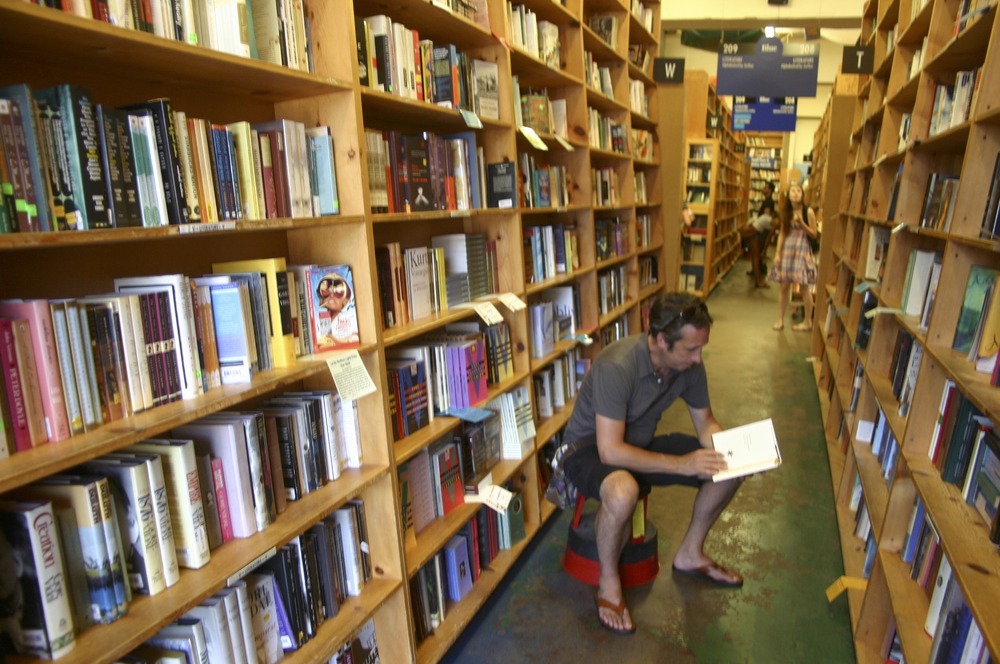
 Monday, March 12, 2012 at 10:47AM
Monday, March 12, 2012 at 10:47AM
Although we're in for another cold spell, the Japanese plum blossoms (梅の花, ume no hana) are now in full bloom here in Fukuoka, reminding us that spring is coming. Bundle up and go have a look!
The city really should force the Lion's Club to tear this eyesore down. What were they thinking?
 Sunday, February 19, 2012 at 3:07PM
Sunday, February 19, 2012 at 3:07PM
I can confidently say without having to look at the news that Fukuoka is enjoying (yes, enjoying) its heaviest snowfall in eighteen years. None of the weather sites had predicted it. None had said that it would not only snow heavily all day Saturday, but would continue snowing throughout the night. Their proclivity to err on caution meant that when I woke up this morning, I was happily surprised to find a Winter Wonderland outside my bedroom window. (Nothing brings out the little boy in me quite like ground covered with several inches of new snow.)
I’m tempted to hop on a train and ride out to the southern part of the prefecture to see how much snow they got, but unfortunately I’ve got things to do. Ho-hum.
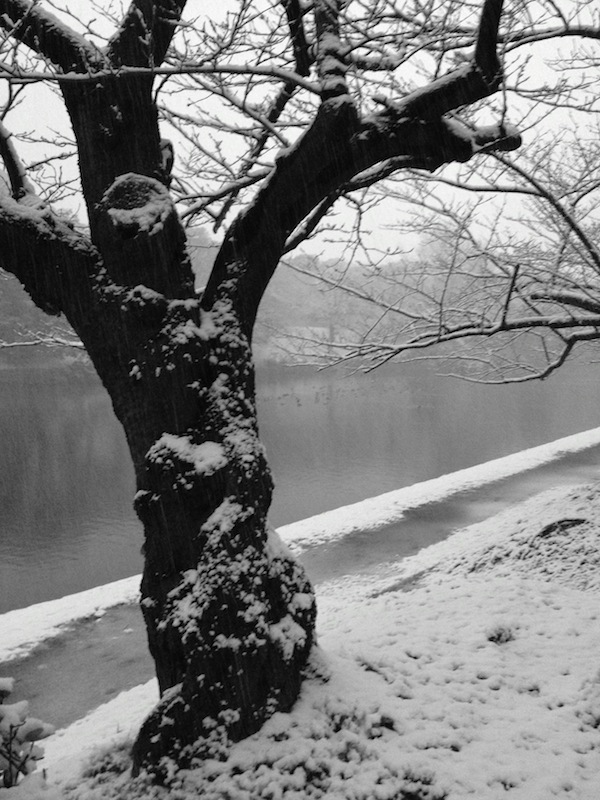
 Monday, February 13, 2012 at 1:36PM
Monday, February 13, 2012 at 1:36PM
A friend noted the other day that I hadn’t posted anything in quite a while.
It’s true.
I was hoping to post something daily once the spring break started and I would be getting paid for essentially not teaching. (If someone working at a Japanese university tells you he’s busy, be vewy, vewy suspicious.) The thing is, the Muses, Thalia and Calliope, have been very kind to me since I returned from my holidays in the States: I am off to a promising start on two novels (one of which I alluded to in an earlier post, and another you can read here).
I try to hammer out a chapter or so of each every morning, which usually leaves me with little time or energy for writing anything else. Not that I don’t want to, mind you.
I have also been asked to put together a series of presentations on e-publishing. (Bit like the blind leading the blind, I’m afraid.)
Anyways, your patience is requested.
 Saturday, January 28, 2012 at 7:05PM
Saturday, January 28, 2012 at 7:05PM
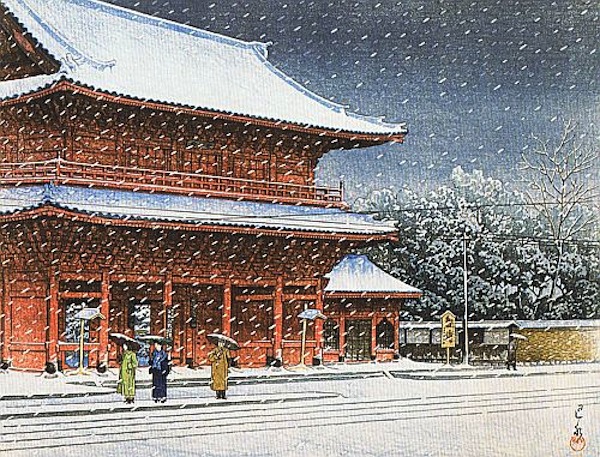 Hasui Kawase's "Zôjôji no Yuki" (1922) It’s been snowing off and on for the past three days here in Fukuoka and the peaks of the mountains to the south and west of the city are now white. It’s tempting to go hiking up one of them. But, then again, who am I kidding?
Hasui Kawase's "Zôjôji no Yuki" (1922) It’s been snowing off and on for the past three days here in Fukuoka and the peaks of the mountains to the south and west of the city are now white. It’s tempting to go hiking up one of them. But, then again, who am I kidding?
On my way to work the other day, I stopped at what the Japanese call a “scramble intersection” (スクランブル交差点, sukuranburu kôsaten), an intersection where pedestrians are allowed to cross every which way they want when the “WALK” sign comes on.
Across the street from me was a salaryman in his late fifties, staring blankly ahead. As we waited for the light to change, fluffy white snowflakes started to fall lazily from the sky.[1] The salaryman’s eyes lifted then followed one of the flakes as it slowly descended, down, down, down, down, and landed softly on the asphalt where it stuck. A gentle smile spread across his face, eyes brightened, and, if I am not mistaken, the salaryman’s day had just been made.
[1] These big snowflakes are called botan yuki (牡丹雪, lit. “peony snow”) in Japanese, which is certainly more poetic and evocative than what we call them in English: “humongous snowflakes”.
 Thursday, October 13, 2011 at 8:33AM
Thursday, October 13, 2011 at 8:33AM
In November of 2010 Sôichirô Takashima was elected mayor of Fukuoka with a 13-point lead over the incumbent. At only 36 years of age, the former TV presenter became the city's youngest, and perhaps most photogenic, mayor the city has ever had.
Several months into his first term, the editor-in-chief of Fukuoka Now, a local foreign language monthly magazine, sat down with the mayor for an interview. Prior to the interview, a call for questions was put out, and I came up with the following twelve. Many of these remain unanswered.
1. Far too often, Edô, Meiij, and Taishô era residences and buildings are torn down only to be replaced with parking lots or shabby, prefab buildings. What can the city do to better protect its architectural and cultural heritage?
2. In most western cities, and in many of the better Asian cities as well, the waterfront area is one of the more beautiful parts of a city. In Fukuoka, however, the waterfront is a jumble of ugly warehouses and shipyards. As visitors from China and Korea arrive at the city's ports they are greeted with an eyesore. What can be done to make the "face" of the city more beautiful?
3. Traveling from Tenjin to Dazaifu, a trip of only 20 km, one passes through four different cities. Four different cities with four mayors, four city halls, four different manhole cover designs, four different civic and cultural halls, four assemblies, and so on, all spending money on unnecessary projects, tearing down what should be registered as cultural assests and replacing them with eyesores. How would you feel about merging Fukuoka City with neighboring mini-cities to cut wasteful spending, increase the tax base, and coordinate planning?
4. Several years ago, the Nanakuma Line opened to much fanfare. Ridership, however, never met expectations. One of the reasons for this, I believe, is the inconvenience of both ends of the line: Minami Tenjin Station and Hashimoto Station. If the Nanakuma Line were extended to connect with Meinohama (and later Atagohama/Momochihama) on the western end and Hakata station and the International airport on the eastern end, I am certain that the number of passengers will increase. What are your plans for making the subway system more relevant?
5. Throughout Japan, and in Fukuoka too, many historical spots are indicated by little more than concrete posts stating that this is the location that such and such happened. This is a missed opportunity to make the history live, to build authentic sightseeing spots. How can Fukuoka better highlight its historical heritage?
6. There was talk some years ago of making Tenjin a free wifi area. As far as I can tell, this has not yet happened. With the growth of the smartphone market, having a free wifi area in the busiest parts of the city would help foster an environment that benefits creators of software and content for these devices. What do you think?
7. Daimyô and other areas would benefit greatly by having many of the streets turned into one-way roads, with small parks or green areas throughout. This would smooth traffic flow and enhance the quality of living for residents and visitors alike. What do you think?
8. What is the city doing to protect some of its older trees and green areas?
9. Many of the parks are poorly maintained. Gardeners come in only once every few months, hack at the weeds, trim limbs, and then leave the parks to be overrun with weeds, garbage, and the homeless once again. What can the city do to better maintain these areas, to make them places people would be happy to visit?
10. Nishitestu buses often cause more congestion than they solve. A better system would be to have zones, with a few dedicated bus lines that transect the city and transfer points where passengers could catch their connecting busses. Instead we now have twenty or more different bus lines that all go down, for example, Meij or Showa Dôri. The current system is wasteful, polluting, and inconvenient. What do you think?
11. Fukuoka is the hometown of many of Japan's most popular celebrities and entertainers. How can the city better use their fame to promote the city? Of course, these people should not expect to be paid, but should do it out of love and pride for their hometown.
12. The city, as you surely know, has a lot of debt, much of it caused by poorly planned projects, such as Island City, Super Brand City, and so on. How can those who make bad decisions with public money be held more accountable for their mistakes?
 Fukuoka,
Fukuoka,  Fukuoka Now,
Fukuoka Now,  Fukuoka mayor,
Fukuoka mayor,  Lost Japan,
Lost Japan,  Soichiro Takashima,
Soichiro Takashima,  interview with mayor of Fukuoka,
interview with mayor of Fukuoka,  problems with Fukuoka,
problems with Fukuoka,  problems with Japanese cities,
problems with Japanese cities,  questions for the mayor of Fukuoka,
questions for the mayor of Fukuoka,  visiting Fukuoka in
visiting Fukuoka in  Fukuoka,
Fukuoka,  Japanese Cities,
Japanese Cities,  Japanese Politics,
Japanese Politics,  Living in Japan,
Living in Japan,  Lost Japan,
Lost Japan,  Traveling in Japan
Traveling in Japan  Tuesday, September 27, 2011 at 8:31AM
Tuesday, September 27, 2011 at 8:31AM
Ukiha is a small farming town (now designated a cityーうきは市ーthanks to its merger with neighboring Yoshii Machi) in the southern part of Fukuoka Prefecture. While the center of the town itself has a collection of traditional houses and buildings that it is trying to promote as a tourist destination, I'm afraid I haven't been there personally. (You'll have to take the city's HP's word that it's worth visiting.) I have, however, on a number of occasions been into the mountains to an area called Ukiha Machi Shinkawa (浮羽町新川) to see the terraced rice paddies--known as tanada (棚田) or dandan batake (段々畑)--and the higan bana (彼岸花, lycoris radiata or cluster amaryllis) which bloom, appropriately, around o-higan, that is, during the equinoctal week in autumn.
Although there is a bus that dawdles its way up the winding mountain road, the best way to get there is by car. You take route 210 to route 105 and follow it all the way up, past the dam, and on up into the mountains until you start seeing the terraced rice paddies. Keep going on up as far as you can, then get out and hike up the rest of the way. Trust me, it's worth the trip.
The best time to go is in early September, just before the rice is harvested or shortly after the rice harvesting has begun as the contrast between fields of rice that have already been cleared and those waiting to be is quite beautiful.
Along the borders of the rice fields you'll find a curious looking flower called the higan bana. The generally come in two colors: red and white. According to Mr. Wiki:
"The bulbs of Lycoris radiata are very poisonous. These are mostly used in Japan, and they are used to surround their paddies and houses to keep the pest and mice away. That is why most of them grow close to rivers now. In Japan the Red Spider Lily signals the arrival of fall. Many Buddhist will use it to celebrate the arrival of fall with a ceremony at the tomb of one of their ancestors. They plant them on graves because it shows a tribute to the dead. People believe that since the Red Spider Lily is mostly associated with death that one should never give a bouquet of these flowers."
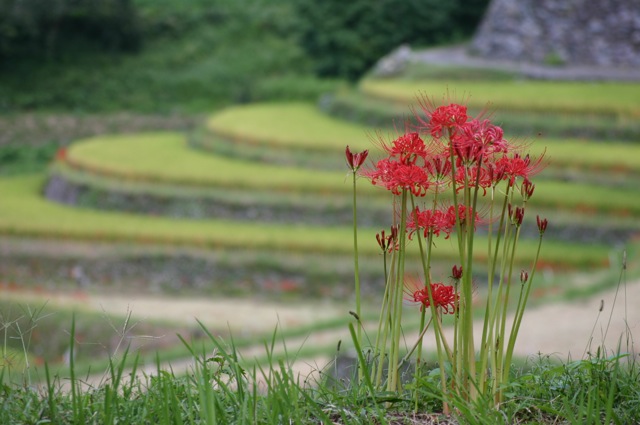
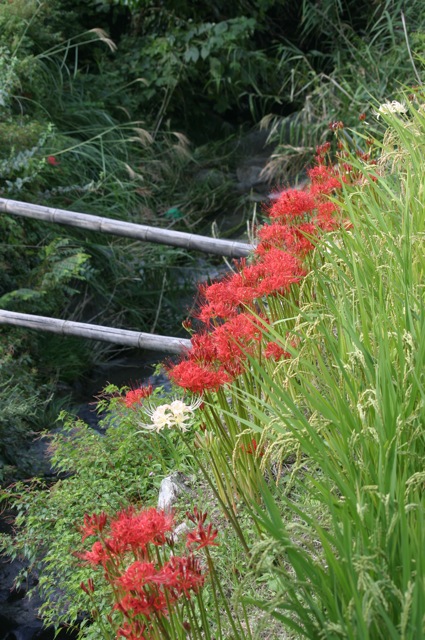
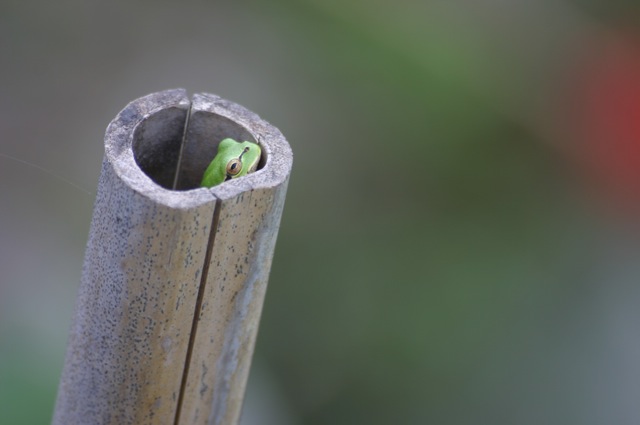
 Sunday, September 11, 2011 at 9:04AM
Sunday, September 11, 2011 at 9:04AM
One of the best parts of living where I do is the proximity to Maizuru Park and the Fukuoka Castle ruins. (I'll write more about the castle and its history at a later time. In the meantime you can learn more here)
I walk or jog around the ruins several times a week and occasionally play tennis on one of the three clay courts that are located at the foot of the ancient ramparts.
In mid summer, there is a deafening cacophony of cicada, but by late summer the noise is replaced by the song of bell crickets. From late September to early December, you can enjoy changing colors of autumn. First to go are the first to come: the leaves from the cherry blossom trees. The last tend to be the gingko trees, the leaves of which form a thick, mustard yellow carpet on the ground in December. The moon, which appears so much larger and brighter in autumn, can be seen rising above the eastern mountains early in the evening in autumn. One of the best places to get an unobstructed view is from the highest parts of the castle.
The winter months tend to be bitterly cold as the wind roars in from the sea. There are, nevertheless, quite a lot of flowers to be seen. Narcissus comes to mind. The umé (plum) blossoms in February are an early harbinger of spring. Soon there after the cherry blossoms bloom and the days grow longer and warmer. Before long, summer comes and the cicada start to kick up a racket again.
 Sunday, September 4, 2011 at 11:55AM
Sunday, September 4, 2011 at 11:55AM
Sometimes when your feet itch, you just gotta scratch them.
One Wednesday a few weeks ago when I was running errands in town, I was overcome with the urge to head towards the beach.
There was a pile of things that needed to be done at home, but figured I'd already put them off this long another day wouldn't hurt. And so, off I went in my usual meandering, zigzagging way towards Fukuhama, a dismal stretch of sand just beyond an equally dreary public housing project, and a stone's throw from a sewage treatment plant. (How charming.) The reason I wanted to go there was that it was the nearest "beach" where BBQs and fireworks, two essentials in the Japanese summer, were allowed.
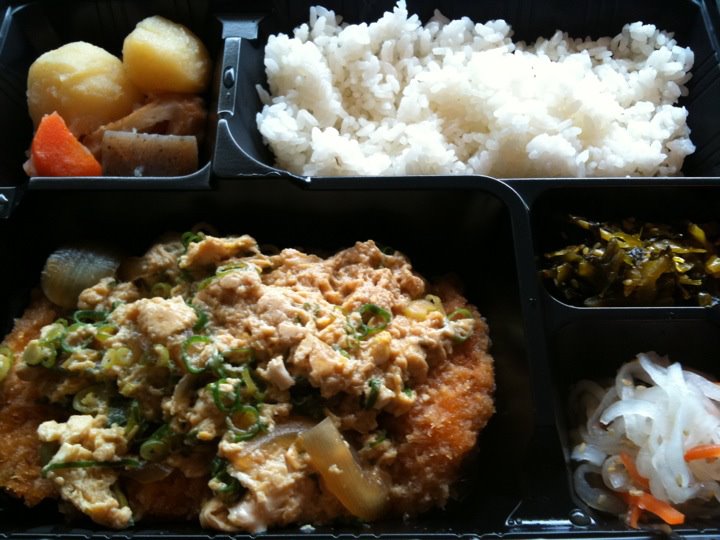 On the way, I bumped into Kojima, the owner of one of my favorite izakaya, Manten Shûraku (萬天集楽). He was delivering bentôs at the time. His restaurant/bar has seen some pretty dramatic ups and downs over the years, and, in order to bolster sales during this most recent downturn, he and his staff have resoted to selling bentôs during the day. They have proven quite popular and if you don't reserve one, chances are they'll sell out by the time you pop into Manten.
On the way, I bumped into Kojima, the owner of one of my favorite izakaya, Manten Shûraku (萬天集楽). He was delivering bentôs at the time. His restaurant/bar has seen some pretty dramatic ups and downs over the years, and, in order to bolster sales during this most recent downturn, he and his staff have resoted to selling bentôs during the day. They have proven quite popular and if you don't reserve one, chances are they'll sell out by the time you pop into Manten.
I had, by chance, just eaten one of his bentôs only thirty minutes earlier and told him that it had been delicious as always.
Kojima thanked me and asked what I was doing in that neighborhood.
I'm off to the beach, I replied and continued on my way.
The fastest way (when walking, that is) to get to the beach from where I live is to walk past the fish market and cut through the harbor. It's also the most interesting. Across the harbor is the shipyard of Fukuoka Zôsen, a shipbuilder. It seems to be a good business to be in as they are constantly launching ships.
A number of refueling ships are usually moored at the quayside.
The newly painted pink building is a company which produces ice for the fishing boats. This begs the question (at least in my mind) of how ice is made. Mind you, I'm not talking about sticking a tray of water into a sub-zero compartment and a few hours later getting ice cubes. No, what I've always wondered about is how one lowers the temperature to below the freezing point, that is how refridgeration works. I understand the concept, but I doubt if I would be able to reproduce it in a jungle à la The Mosquito Coast. (My mojitos would have to be served lukewarm.)
There are always piles and piles of palletes stacked up at the end of the pier. Freshly caught fish is placed in them and packed in ice.
From the harbor you can take one of three routes. Up and over Nishi Kôen (West Park), or either south or north around the smalll mountain the park is located on. If I'm heading for Momochi Hama, I tend to take the southern route which brings you to the old neighborhood of Tôjin Machi with all of its temples.
Today I took the northern route to save time and about fifteen minutes later found myself at the entrance of Fukuhama. As expected, the beach was all but deserted, save one slim man in surfer trunks who looked somewhat familiar.
My iPhone started ringing.
I thought that was you, I said, answering the phone.
It was Tarô, the owner of another bar and restaurant I frequent called Kona Cafe.
I often joke that I don't have friends, only bartenders, and this day that couldn't have been closer to the truth.
What are you doing, Tarô asked when I sat down next to him on the beach.
I didn't feel like working, I answered.
Neither did I, he said back.
When I told him that I had tried to go to his place for lunch the other day, he apologized, explaining that he only did lunch on the weekends now. He added that business was hurting. It had been slow enough what with the Lehman shock, he said, but then the earthquake hit . . .
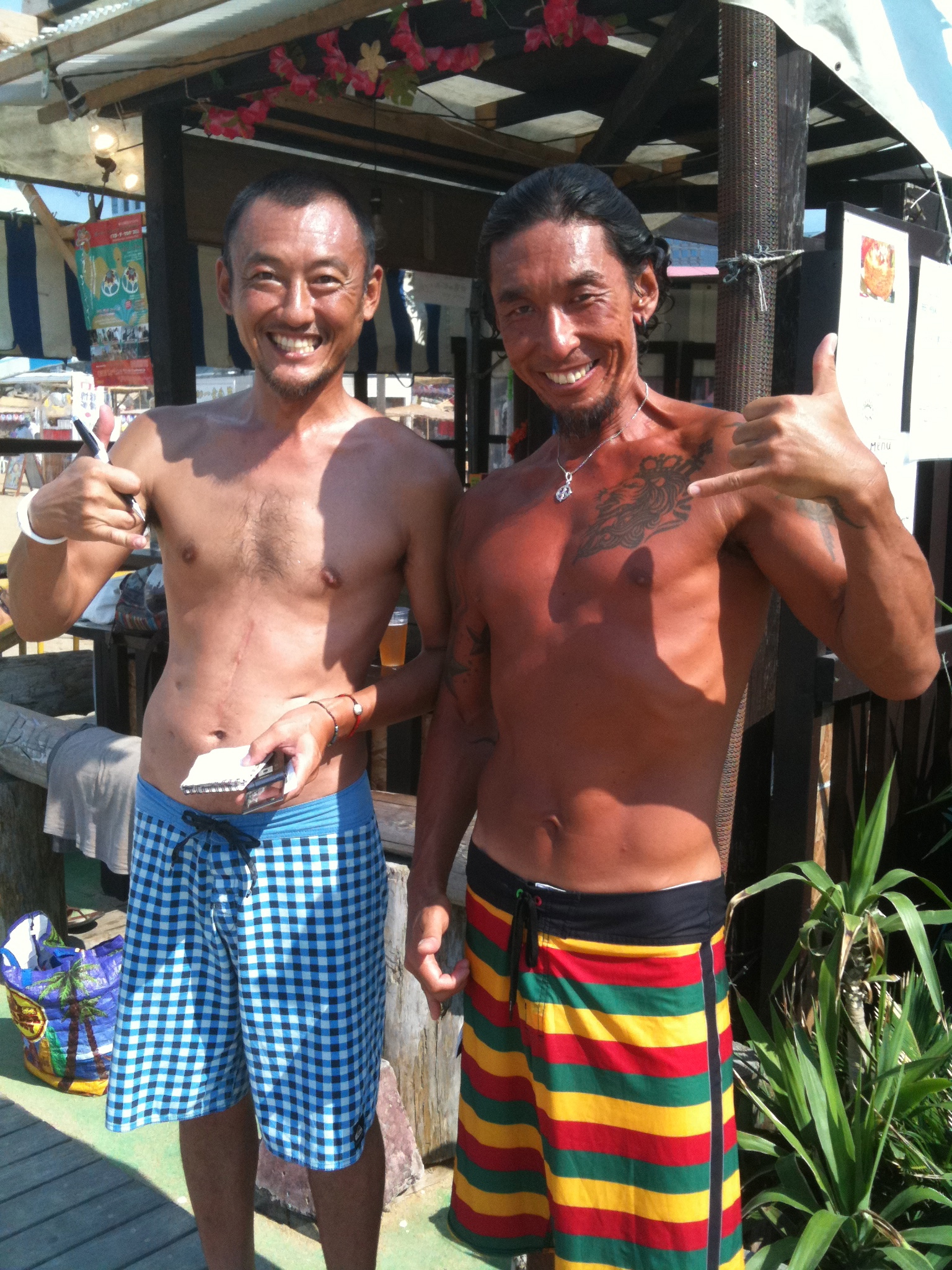 It was the same everywhere. Ever since the earthquake and tsunami, Japanese have been exhibiting jishuku (自粛), or self-restraint which has only added to Japan's woes.
It was the same everywhere. Ever since the earthquake and tsunami, Japanese have been exhibiting jishuku (自粛), or self-restraint which has only added to Japan's woes.
The Economist has reported that "amid the gloom the outlook for a robust recovery has actually been brightening . . . forecasting a boom in 2012 and 2013." Be that as it may, but until people start feeling confident about Japan's prospects, they won't be willing to go out for dinner and drinks as often as they used to. In the meantime, friends like Tarô and Kojima have to do what they can to drum up business.
Tarô said the eighth anniversary of the opening of his bar was coming up and he had doubts that he could keep it going for much longer. A friend of his was shutting down own restaurant after about ten years.
It'd be a shame if Kona Cafe ever went bust. It's such a nice little place and his loco moco really can't be beat. (Trust me, I'm something of a connoisseur of the humble loco moco.)
Changing the subject, Tarô suggested heading over to Momochi Hama to get some beers. Besides, he added, if we hang out together too long on this beach people will start to think we're gay. My treat.
One of my policies is to never say No when someone offers to buy me a drink. Good things usually happen.
So, we made our way towards Momochi, bullshitting along the way. Once there, we plopped our arses down at the counter of a kebab stand that opened up for the summer months. It was run by an Iranian who spoke faultering Japanese and zero English despite having lived in Japan for over two decades. Made me wonder how he was able to function.
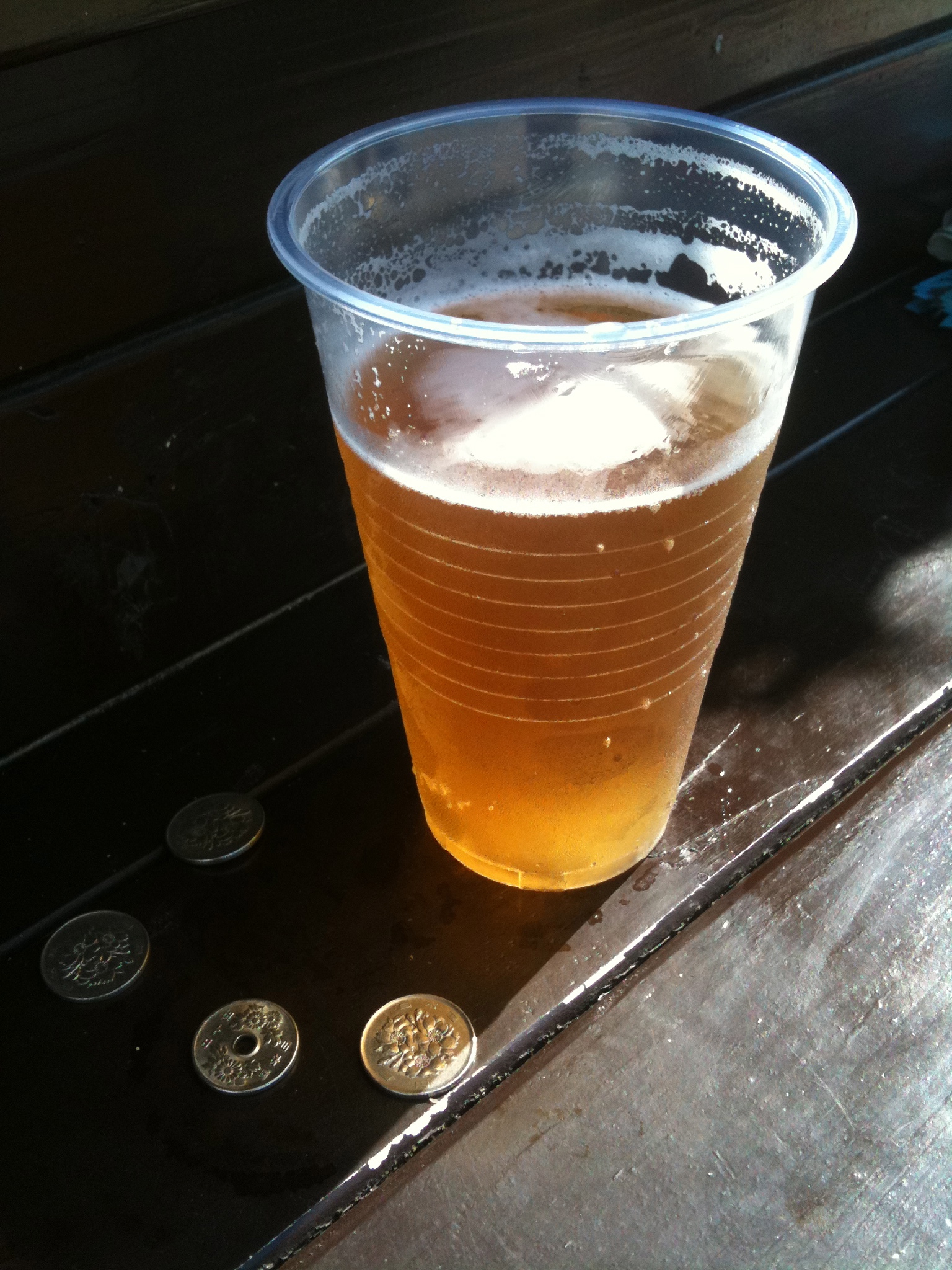 Tarô struck up a conversation with a fellow surfer while we were there. The guy was in his late 40s but didn't have an ounce of fat on his tan body (man pictured above and on the right). I should look so good. Apparently, he had come from Chiba to work on a rock festival that was being held two weeks later in the city and had an entourage of similarly chiseled and tanned friends with him. What a life.
Tarô struck up a conversation with a fellow surfer while we were there. The guy was in his late 40s but didn't have an ounce of fat on his tan body (man pictured above and on the right). I should look so good. Apparently, he had come from Chiba to work on a rock festival that was being held two weeks later in the city and had an entourage of similarly chiseled and tanned friends with him. What a life.
As Tarô and the guy were talking, a bevy of young girls in bikinis came up to me and asked straight off how old I was. Forty-five, I replied. Why lie? I asked one of the cuter ones how old her father was and got a surprising answer: I don't have a father. How about you, I asked her friend. Me neither, was the reply.
Although still in high school, they were all drinking and smoking in that affected way novices smoke. One of them even had an infant with them and passed the chubby kid over to me to hold.
You married, they asked.
I am.
I popped out my iPhone and started flipping through photos of my own son who was younger than the teen's kid. (How's that for irony?)
I asked if the girl was still in school. She was, she replied. That's good, I said and asked where she went.
Dai-ichi, she answered. Do you know it?
I did. The Fukuoka "Number One" High School was one of the worst schools in the city. I asked if they all went to the same school to which two replied that they attended Kyûshû Girls High School. The hair on these two girls was dyed brown and both of them had pierced navels.
Pointing at their belly rings, I asked, Isn't that against the rules? Unlike just about everything else, the girls told me, they didn't have their belly buttons checked by their teachers.
Naru heso, I replied.
That, believe it or not, was the funniest thing I had said all week and the girls were rolling on the boardwalk. Naru heso is what the Japanese call an oyaji gag or a dajare (駄洒落), namely, the kind of pun an old fart might say after one too many glasses of shôchû. Naru heso is a corruption of naru hodo (成程), which means "indeed", "really", or "you don't say". Changing the hodo to heso, which means "navel", I was uttering a short phrase that had no real meaning, but was understood by all. (Sorry, humor doesn't translate very well.)
At any rate, they all laughed and as the saying goes, make a girl laugh and you're half way up her leg.
Before long, it was time for the two of us to hit the road and go to work, so Tarô said good-bye to his fellow surfer and I bid a reluctant farewell to the girls.
What had begun as a mediocre day for the two of us became, for me at least, one of the best days of summer.
 Tuesday, June 28, 2011 at 9:36AM
Tuesday, June 28, 2011 at 9:36AM
Every now and then we get a reprieve from the dark, wet days of the rainy season when sullen, gray skies clear and summer clouds float playfully across the blue welkin. Light at the end of the tunnel. The rainy season will soon pass and you'll find me at the beach with a cold beer sweating in my hand.